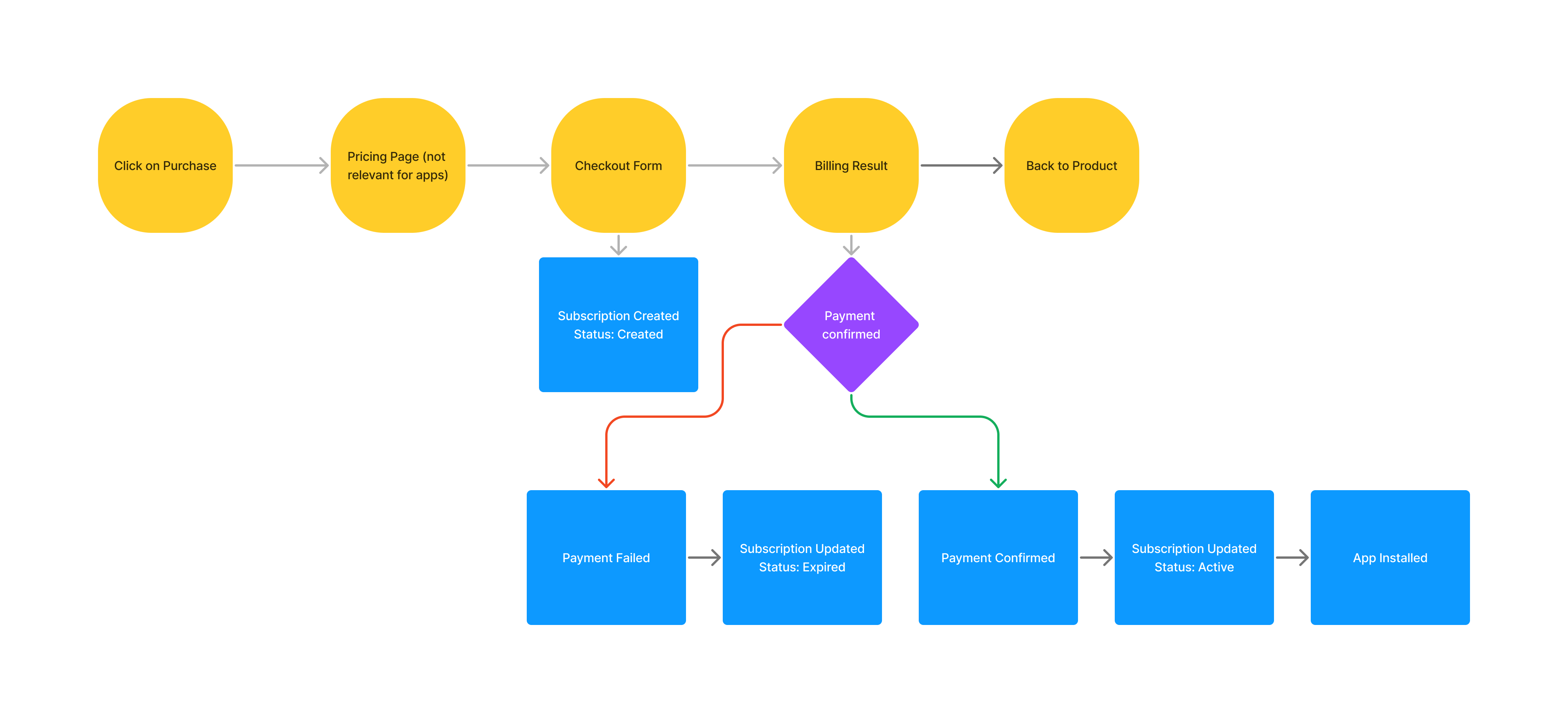Purchase Flow
The purchase flow in the InTandem platform initiates with user interaction, typically through a call-to-action (CTA) such as an 'Upgrade' button, an external link, or an app market purchase button. This section provides a step-by-step guide for developers on how this process unfolds, from the initial user action to the final webhook trigger.

Purchase flow diagram
Step-by-Step Process:
- Initiation via Purchase CTA: The flow begins when a user clicks on a purchase CTA. This could be any interactive element that prompts a purchase, such as an upgrade button or an app market purchase option.
- Presentation of Pricing Page: Upon interaction with the CTA, the user is directed to a pricing page. Developers can integrate an external pricing page following the guidelines provided here.
- Selection and Checkout: The user selects a suitable package and is then redirected to the checkout page. Here, they can confirm their purchase and enter payment method details if necessary.
- Subscription Creation and Webhook Trigger: Confirming the purchase leads to the creation of a new subscription, which in turn triggers the Subscription Created webhook.
- Billing System Response: Post-purchase, the platform awaits a response from the billing system to ascertain the success or failure of the initial charge.
- Webhooks for Billing Result: Depending on the billing result, either a 'Payment Success' or 'Payment Fail' webhook is activated.
- Subscription Status Update: Following these webhooks, a Subscription Update webhook is triggered, updating the subscription status to either 'Expired' (if payment failed) or 'Active' (if payment succeeded).
- App Purchase Specifics: If the purchase involves an app, the subscription update webhook is followed by the App Installed webhook.
This structured flow ensures a smooth and transparent process for managing purchases on the InTandem platform, providing developers with clear guidelines for integration and implementation.
Updated about 1 month ago
